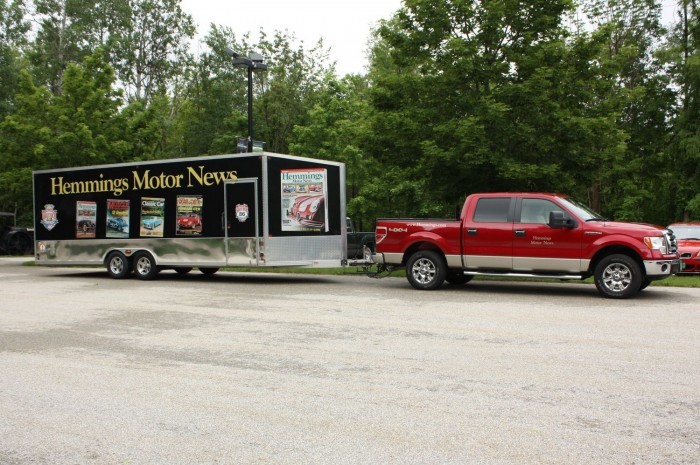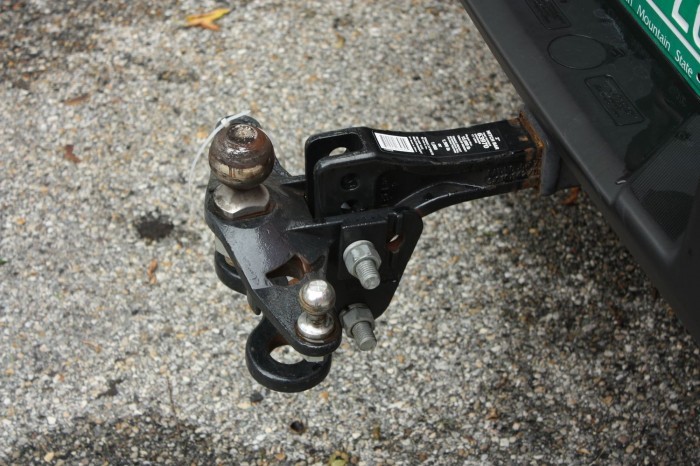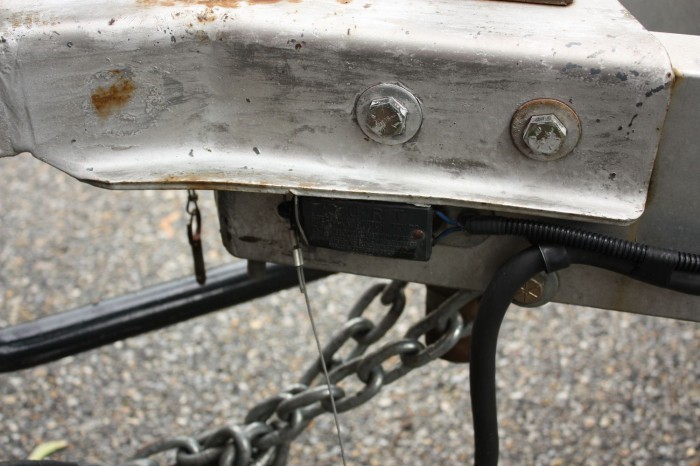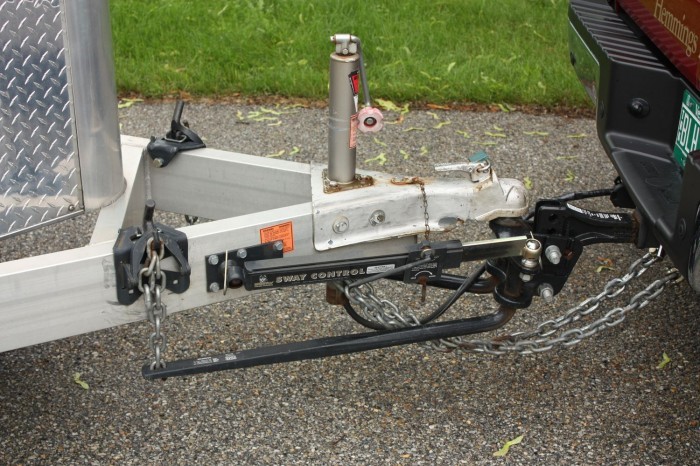[I was surfing the web and found this. It caught my eye as I am trailering one of my Morgans, this coming weekend, to Pensacola for their all British Car Show. Lately I find I am driving less and trailering more. Especially with the older cars or for car events farther afield. Maybe it’s the creature comforts offered by the tow vehicle, or I may just be getting old. (I don’t like the second option so I’ll go with the first!) I have a car trailer and have some experience however I don’t want to become over confident or complacent with something this critical. So, give it quick read and perhaps you will learn something new, as I did. The last thing we need it an accident or worse yet, an injury. Be safe but have fun! Mark.]

According to statistics compiled by the DangerousTrailers.org web sitee, an average of 68,358 American motorists are involved in towing-related accidents each year, each resulting in average damages exceeding $43,000. While towing a trailer seems simple enough, proper equipment, safety practices and loading techniques are all essential components in ensuring that trailering drivers get from point A to point B with vehicles, passengers and equipment intact.
The first step to towing any kind of trailer is ensuring that both trailer and tow vehicle are properly rated for the load to be carried. Should the proposed tow vehicle be rated by the manufacturer to safely tow up to 5,000 pounds, pulling a double-axle car trailer, loaded with a 1961 Chevrolet Impala, across Colorado’s Independence Pass certainly isn’t recommended. The best advice here is “buy enough truck,” understanding that new towing requirements may require the purchase of a different tow vehicle with a higher weight rating.
A proper hitch and receiver are the next essential components, and for towing a vehicle the absolute minimum recommended would be a Class III hitch and receiver, rated at a maximum trailer weight of 6,000 pounds (when used with a weight carrying hitch) or 10,000 pounds (when used with a weight distributing hitch). A Class IV hitch and receiver gets a higher rating (up to 14,000 pounds, when used with a weight distributing hitch setup), but may not be applicable for tow vehicles aside from full-size pickups and SUVs. Beyond this lies Class V hitches (rated up to 17,000 pounds with weight-distributing hitches) and fifth-wheel hitches, which are primarily the domain of heavy-duty pickups.
Once satisfied with tow vehicle and hitch setup, the next challenge becomes finding a suitable trailer to handle your perceived vehicle hauling needs. If your towing is limited to hauling a Formula Vee racer to regional vintage events, a double-axle enclosed trailer will likely be overkill in terms of both size and weight. On the other hand, when towing a Mercedes-Benz Unimog cross-country, a two-wheel car dolly may be suboptimal for your needs. When purchasing a trailer, try to consider both current and future needs; if your passion is for restoring Corvairs, then sizing a trailer may be fairly simple. Should your passion extend to all GM products, including pickups, sizing a trailer may be more of a challenge.

For hauling vehicles, trailers should be equipped with a weight distributing hitch and trailer brakes (which may or may not be required by the state in which you reside). An anti-sway system may be a wise investment as well, particularly for those new to towing. Sway likely represents the biggest danger to towing trailers, and it can be caused by factors as diverse as excessive speed, strong crosswinds, passing trucks or improper trailer loading.
To minimize the risk of sway, loads should ideally be centered over the trailer’s axles, evenly balanced from side to side. This isn’t always possible, so most recommend carrying slightly more weight to the front of trailer (assuming that the rig’s tongue weight isn’t exceeded in doing so). Under all circumstances, avoid placing the heaviest part of the load to the rear of the trailer’s axle, as doing so will increase the likelihood of trailer sway.
If a trailer begins to sway, the best corrective action is to gently let off the accelerator, slowing (without applying the tow vehicle brakes) until the trailer is again under control. Should you have an electronic trailer brake controller, applying the trailer brakes manually will bring a swaying trailer under control, which is further justification for an electronic trailer brake and controller setup. Accelerating further or braking the tow vehicle heavily are likely to exacerbate the problem, so both should be avoided. Be aware that certain situations (crossing bridges or being passed by tractor-trailers, for example) are likely to create cross winds; be aware that this make increase the chances of trailer sway, and be prepared to act accordingly.

Ensuring that trailer and tow vehicle are level will also help to minimize the risk of sway, and different trailers may require the use of different height receivers. If you frequently tow more than one trailer, investing in a multi-position receiver may be easier and less expensive than buying separate receivers for all trailers. Also, ensure that the receiver ball size matches the hitch of the trailer; attempting to tow a 2-5/16-inch hitch with a two-inch receiver ball is a recipe for disaster.
Prior to loading the trailer, it’s a good idea to give it a full inspection, particularly if it hasn’t been used in a while. Check tire pressuree as well as tire tread depth; tires may show ample tread, but those with signs of dry rot should be replaced. Attempting to wiggle the wheels and tires from side-to-side may show if wheel bearings are worn, and it’s a good idea to pack (non-sealed) bearings with grease annually. Check electrical connections for corrosion, and use dielectric grease on the connector pins to minimize the chance of future corrosion. Inspect wood deck planking for any signs of rot, and replace as necessary. Finally, hitch the trailer to the tow vehicle to double check that all lights (and electric trailer brakes, if equipped) are functioning.
The specific procedure for loading and strapping down a vehicle on a trailer will vary by trailer and the type of ratcheting strap used, but some general guidelines still apply. First, be sure the vehicle’s weight is centered over, or slightly forward of, the trailer’s wheels. As much as you can, ensure that the side-to-side weight of the trailer is balanced by offsetting tool boxes with things like fuel jugs. When using ratcheting straps that cradle a vehicle’s tires, be sure that all attachment points are secure and close enough to the tire to ensure proper operation (per the strap manufacturer’s instruction). When using over-the-axle type ratcheting straps, be sure the strap is wrapped around a structural member, but not rubbing against coolant hoses, fuel lines or brake lines. When using ratcheting straps that attach to the vehicle, ensure (again) that straps are attached to strong enough part of the frame to carry the load. As a general rule of thumb, one strap in each corner should be the absolute minimum number used, and placing four wheel chocks (in front of the front wheels and behind the rear wheels) gives additional piece of mind. As a further reminder, the trailered vehicle should be in Park (or in first gear), with the handbrake set.

Once the trailer is hitched to the tow vehicle, it’s a good idea to go through one more safety checklist. Is the load level, or does the tongue weight of the trailer (or the drop of the receiver) need to be adjusted? Are all the electrical connections tight, and do all signals, lights and brakes work as intended? Are the safety chains crossed in an X-pattern beneath the trailer hitch, forming a cradle in the event of a hitch failure? Is the tether for the electric trailer brakes set? Is the nose wheel up and locked, and is hitch securely locked into position? Have the lug bolts on the trailer (and any other fasteners potentially prone to loosening) been tensioned to the proper torque?
As with most tasks, prior proper preparation is the key to safe and successful trailering, and the best way to avoid becoming one of the 68,000 plus motorists involved in trailering accidents each year.
A tip of the hat to Brad Babson for his help in compiling this piece.

Leave a Reply to Rick Frazee Cancel reply